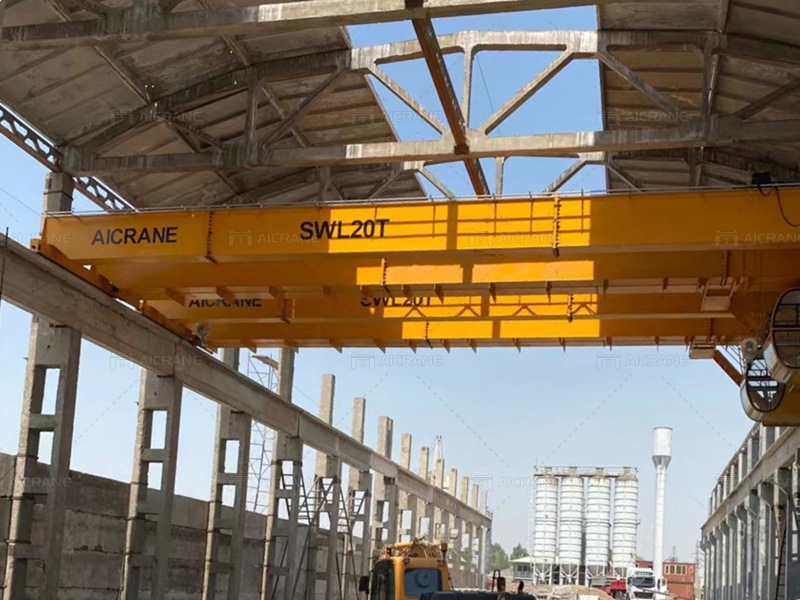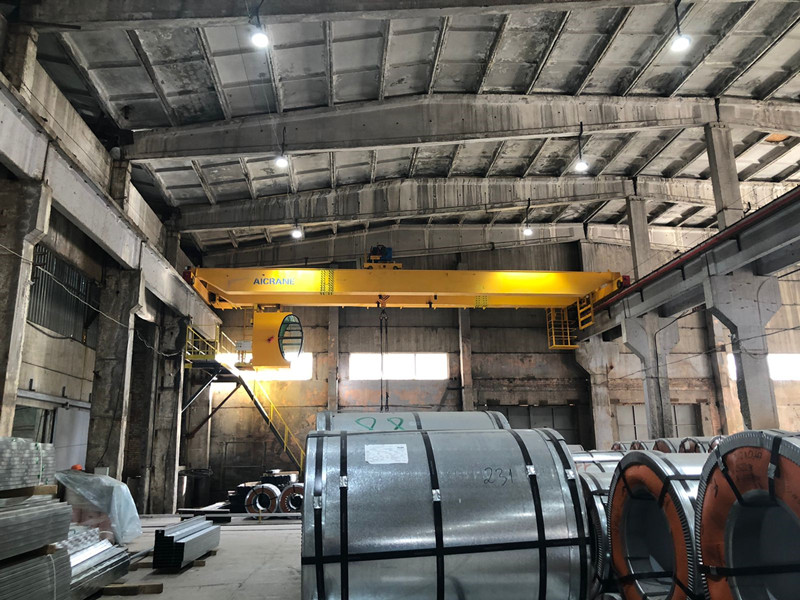When it comes to material handling in industrial environments, overhead cranes play a vital role in facilitating efficient operations. Among the various types of overhead cranes, double girder and single girder configurations are two common options, each offering unique advantages and applications. In this article, we will conduct a comparative analysis of double girder overhead cranes and single girder cranes, exploring their differences in design, performance, and suitability for different industrial applications.
Design and Structure
Double girder overhead cranes feature two parallel girders supported by end trucks, providing enhanced stability and load-bearing capacity compared to single girder cranes, which consist of a single main girder. The double girder design allows for larger spans and higher lifting capacities, making them ideal for handling heavy loads over longer distances. Single girder cranes, on the other hand, are more compact and lightweight, suitable for applications with lighter loads and shorter spans.
Lifting Capacity
One of the primary differences between double girder and single girder cranes lies in their lifting capacities. Double girder overhead cranes typically offer higher lifting capacities ranging from several tons to several hundred tons, making them well-suited for heavy-duty applications in industries such as steel manufacturing, automotive production, and shipbuilding. Single girder cranes(Мостовой кран 15 тонн), while capable of lifting moderate loads, have lower lifting capacities compared to their double girder counterparts and are commonly used in light to medium-duty applications such as warehouses, workshops, and small manufacturing facilities.

Span and Height
Double girder overhead cranes are designed to accommodate larger spans and lifting heights compared to single girder cranes. The robust construction of double girder cranes allows for longer runway spans and higher lift heights, making them suitable for handling oversized materials and operating in facilities with high ceilings. Single girder cranes are more compact and versatile, offering flexibility in confined spaces and lower ceiling heights.
Cost Considerations
In terms of initial investment, single girder cranes are generally more cost-effective compared to double girder cranes due to their simpler design and lower material requirements. However, the total cost of ownership over the crane’s lifecycle(Купить кран мостовой) should also be considered, taking into account factors such as maintenance, repairs, and operational efficiency. While double girder cranes may have higher upfront costs, they offer greater lifting capacities, longer service life, and lower maintenance requirements, making them a cost-effective choice for heavy-duty applications in the long run.
Application Specificity
The choice between double girder and single girder cranes ultimately depends on the specific requirements of the application. Double girder overhead cranes are ideal for industries with heavy lifting requirements, long spans, and high ceilings, where robustness and reliability are paramount. Single girder cranes are more versatile and adaptable, suitable for a wide range of light to medium-duty applications where space constraints and cost considerations are primary concerns.
Durability and Longevity
Double girder overhead cranes are typically engineered with heavier construction and components compared to single girder cranes, resulting in increased durability and longevity. The robust design of double girder cranes(Металлургический мостовой кран) allows them to withstand heavy loads, frequent use, and harsh operating conditions without compromising performance or structural integrity. As a result, double girder cranes often have longer service lives and require less frequent replacements or major repairs compared to single girder cranes, translating to lower lifecycle costs and higher overall reliability.

Operational Stability and Precision
Due to their dual girder configuration and wider stance, double girder overhead cranes offer greater stability and precision during lifting and movement operations compared to single girder cranes. The additional support provided by the second girder minimizes deflection and sway, resulting in smoother and more controlled load handling. This enhanced stability is particularly advantageous when handling delicate or high-value materials that require precise positioning and minimal oscillation during transportation or assembly processes.
Flexibility for Customization
While both double girder and single girder cranes can be customized to some extent to meet specific application requirements, double girder cranes offer greater flexibility for customization due to their larger size and load-bearing capacity. Manufacturers can incorporate additional features and functionalities into double girder cranes, such as auxiliary hoists, specialized lifting attachments, or automation technologies, to address unique operational needs and improve efficiency. This customization capability allows double girder cranes to adapt to evolving production processes and industry trends more effectively than single girder cranes.
Conclusion: In conclusion, both double girder and single girder overhead cranes offer distinct advantages and are suitable for different industrial applications based on their design, lifting capacity, span, height, cost considerations, and application specificity. Understanding the differences between these two types of cranes is essential for making informed decisions regarding material handling equipment selection, ensuring optimal performance, efficiency, and safety in industrial environments. Whether it’s heavy-duty lifting in large-scale manufacturing facilities or versatile handling in smaller operations, there is a suitable overhead crane solution(производство мостовых кранов) available to meet the unique needs of every application.